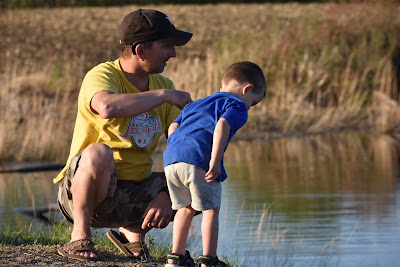Find the Inspiration
Can someone spend too much time
watching curling? The answer on behalf
of all curling enthusiasts is, “Heck no!” For most diehard curlers, playing the game is
even better than sitting back and watching it.
Incredible inspiration comes from
seeing this game of strategy play out on a sheet of ice with rocks and brooms. There’s a keen resemblance between the sport
of curling and the achievement of dreams.
I was excited to watch the Manitoba rink, with Skip Kerri Einarson, win
their first National Title in the Scotties Tournament of Hearts this past
week. When you look at the efforts of
the Einarson Team, you saw heartbreaking setbacks, missed opportunities, and
undeniable successes. All in the game of
curling.
The accomplishments of this
curling team and your goals, dreams, and aspirations are achieved by knowing
how to set yourself up for the win. I checked with my clients whether their financial plan made a difference. They shared
the plan helped them save more money and be more mindful of their
spending. The best comment was, “It
has been challenging to save the extra money at times, but I am sticking with
it.” Sticking with something is
hard work. To win a National Curling
Championship is hard work as well. You
must prepare yourself physically and psychologically.
If we wish to fulfill a dream,
anything in life that challenges us is worth doing. Like
Booker T. Washington said, “Nothing ever comes to one that is worth having,
except as result of hard work.” That’s
exactly what spectators witnessed with all the teams curling in the Canadian Scotties
Tournament. This is exactly what you can
expect when you put together a plan to achieve your dreams.
Picture the Perfect
Eight-Ender
In curling each player on the
team throws two rocks (stones). When all the team’s rocks strategically land in
the house (without any opponents’ rocks), they score a perfect
eight-ender. That’s what we plan to do
here. We will examine the perfect
eight-ender that will rock our
financial goals.
1. Set Goals. We need to set out our expectations in black
and white.
You could see the importance
of this playing out in the game of curling.
A curling game is divided into ends much like
an inning in a baseball game. Each team has either eight or ten ends to achieve
a win.
Mapping out a financial game plan sets ourselves up for a win.
2. Practise Patience.
Patience is a requirement in virtually anything and everything we do.
How many times have you heard, “Patience
comes to those who wait”?
We often
expect things to happen instantaneously, but seldom does it work that way.
In the game of curling, a team throws eight
rocks each end.
When it is all said and
done in a ten-end game, a team delivers eighty (80) rocks from one end of the
house to the other.
The outcome of the
game cannot be determined from the start and neither can the process be rushed.
The same is true when we are saving money gradually
for something we want to achieve.
Slow and steady wins the game.
3. Create the Best in Every Situation.
Each curling end may have its share of
struggles and opportunities. Certainly, every rock may not always be placed
precisely where we intended.
When we
compare a curling end to a year based on financial outcomes, we, too, may have
years with unforeseen struggles and opportunities.
The key is to do the best with whatever has
been thrown at us.
This poses the need
to have
emergency savings in place,
insurance coverage for the what-ifs, and
a manageable budget to balance both struggles and opportunities.
4. Pick Your Priorities and Make Hard
Choices. We previously spoke about
the importance of goals, but our goals need to be put in order of priority.
What do we want to achieve first when we
can’t possibly do it all?
That’s hard. Sometimes,
we may need to give up something now to capitalize on something later. I look at some curling ends when a team
conceded a point, only to be in a better scoring position in the next end to
score more points.
5. Play as a Team. The most impressive efforts occur when a team
plays effectively together.
The Manitoba
rink has a wonderful relationship. Their communication was the driving force
behind their success.
In some ends, when
they talked less or not at all, then the outcome was disastrous. Certain things
can be done in isolation, but for the most part, teamwork produces remarkable results.
Whether you are single or a couple and are
attempting to achieve financial goals,
you need an active support network.
Others’ encouragement prompts you to keep
going when the road gets hard.
Talk.
Talk. Talk. This technique is the pinnacle to any win.
Did you notice the teammates talking about
the strategies between the stones thrown?
They were constantly planning the next move. The encouragement to the
sweepers the shouts of, “Hurry hard” or “Sweep” were relentless.
Can you imagine having people in your corner
shouting, Great job!
You got this!”
You would feel like you were sitting on top
of the world with the ability to achieve anything with the backing from your
encouragers. The next important pillar is what you and only you can control,
your mind.
6. Stay in the Zone. I can
think of three D’s (no doubt there are more) which stifle performance.
Distractions. Discouragement. Disappointments.
At the Scotties, the curlers face overwhelming
media attention, noisy chatter and cheering from the spectators, and activity
from the other sheets of ice.
When the
curlers played, they required a keen focus on their game to secure a win. They must
keep all distractions at bay as if they don’t exist.
Any discouragement must be released after a
bad end.
Any evidence of disappointments
in their team performance must be pushed aside and discarded.
We can learn from them. Our minds are prone
to wander at the best of times.
But it’s not only our minds, our eyes and hearts do an exceptional job of leading us astray from our financial goals. We must stay in the zone while we
zone out everything around us.
That can
be difficult.
Why-wait-when-you-can-have-it-now
screams at us every time we watch television, look at our phones, or open a
newspaper.
We need to remain fixated on
our written financial goals. (This is our rock-solid foundation).
7. Acquire a Coach. Mastering the game of curling can be likened
to mastering the game of finances.
The
terminology in curling can be daunting. Terms, like house, rings, or the button,
may mean only the obvious if you are new to the game. Likewise, with finances,
investments like
RRSPs, TFSAs, and RESPs may be foreign to you if someone
didn’t explain them.
A coach (or
teacher) broadens your understanding of any game, as well as, presents unique
strategies to help you play your best, and even sets you up for a win.
At the Scotties Tournament, often the coaches
were called onto the ice for consultation to plan the best strategy in tough
situations. This truth applies to financial experts who are consulted to share
their expertise on our unique financial circumstances.
A coach comes with fresh eyes to shine light
on the blind spots and advises accordingly.
From here, a team effort (both advisors and clients) agree on a suitable
strategy.
A coach’s expertise provides us
with the confidence to make the right decisions.
8. Have fun. The one aspect
everyone appreciates about curling is the “fun”. You would never curl if you didn’t enjoy the
game. Also, you wouldn’t watch the game
if you didn’t understand it. No two
games are ever alike. It’s because the
sheets of ice are never identical; the weight (the amount of force each player
uses to deliver the rocks) is different, and obviously, the strategies
implemented by each skip are unique. Curling can be frustrating, as
well as fun, when you attempt to secure a win for the team. Managing our money can be equally challenging
and fun. Money allows us to pay our
bills, feed our families, and enjoy the simple (and even the exotic) pleasures
in life.
Striking a balance between our needs and wants is indeed a challenge. When we set ourselves up for a win, we can
enjoy both.
Formulate a Game Plan
Any time we venture out to learn
something new, we face a steep learning curve.
The one stipulation would be to understand the rules. Then we can adapt a plan to achieve the goal
of mastering and managing the outcome. Take,
for example, everything we witnessed at this week-long curling event. Some teams went home empty-handed while only
one team secured the ultimate win. The
other provincial teams will be back next year.
They haven’t surrendered; and they certainly don’t feel defeated. They played their best at the national
level. They arrived at this junction
because of their hard work. You, too, will arrive at your destination with the
right strategy and knowledge.
When you have a game plan, take a
shot at your financial goals. Allow
yourself to be flexible and adjust to the conditions. With the right rocks in play, you are setting
yourself up for the win. What’s the one thing you can do today to make this
happen?































